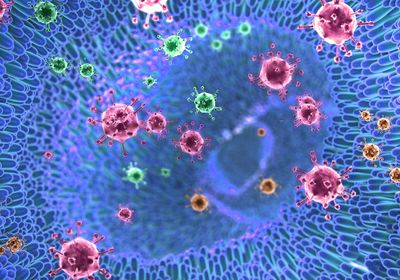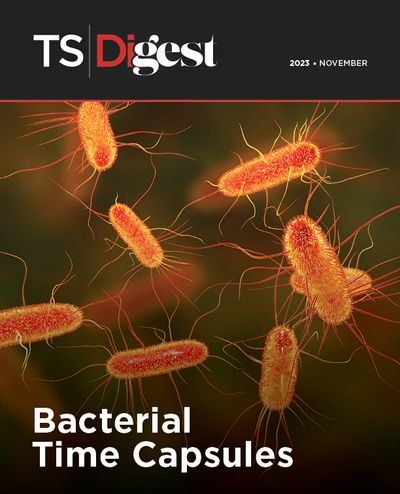The Viral Microbiome
Humans harbor both bacteria and viruses that help keep us healthy. Soon, they might cure us too.

As a researcher of the critters that live in human bodies, microbiologist Frederic Bushman at the University of Pennsylvania has broad interests, from how microbial communities colonize newborns to the interplay between the microbiome and COVID-19. After seeing the powerful effects that microbes can exert on human health, he looks forward to a time when we can use them to our advantage.
You study both the bacteria and the viruses in our microbiomes. What kind of viruses do we have, and are they bad for us?
We have a whole “virome” in our bodies, about a billion virus-like particles per gram of human gut content. Of the ones that we can identify, most are phages that infect the bacteria in our microbiomes, and some are viruses that infect human cells.
They colonize us shortly after birth.1 Babies are born sterile, but then bacteria come in, and many of them have viral sequences integrated into their genomes that will eventually excise and grow until they explode the cell and take their chances as free viral particles. Human-associated viruses arrive shortly afterwards.
Some of those viruses are pathogenic, but the virome likely also modulates health in many ways. It may be that some amount of low level viral infection provokes a permanent weak immune response that is part of good health.
New effects of the microbiome seem to be discovered daily. What do you expect to see ten years from now?
We will be optimizing and composing microbial communities to advance human health and treat infections such as C. difficile infection, for which products have already been approved.2 There will be more of that. What useful metabolic outputs can we get from the numerous and diverse bacteria in the world? And what would it take to install them in the gut? I’m very optimistic that we will answer those questions and also about the long-term prospects of engineering the microbiome.
This interview has been condensed and edited for clarity.
References
- Bushman F, Liang G. Curr Opin Virol. 2021;48:17-22.
- Chehoud C, et al. MBio. 2016;7(2):e00322-16.


